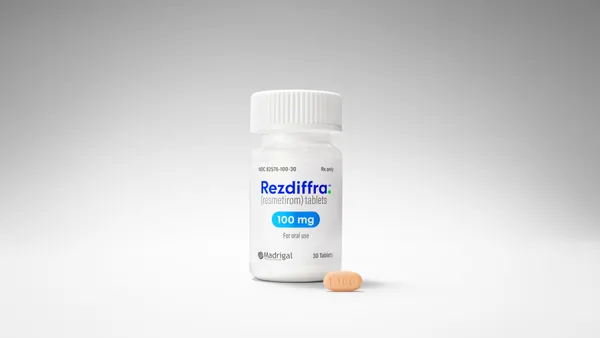VIEW on Marketing September 2008 CUSTOMERCENTRIC MARKETING Since its inception, the pharmaceutical industry has achieved tremendous success on a variety of levels. It has provided revolutionary clinical advances in a great many therapeutic areas. However, in recent years the success of pharmaceutical manufacturers have been challenged in a number of ways: . A relative lack of clinical innovation. . Patent expirations of blockbuster drugs. . The commercialization of “me too” products. . Increased cost management from payers, physicians, and patients. . Restrictions on sales representatives. . Persistent growth of generics. The challenges the industry faces coincides with broader changes in the way healthcare is delivered and managed. Examples of these trends include: . An emphasis on prevention and wellness as a primary cost management strategy. . An increased adoption of technology to make delivery of care more efficient. . An acknowledgement that continuity of care can and will have a dramatic impact on outcomes. . A greater focus on accountability through pay for performance and hospital benchmarking initiatives. . The application of evidence based medicine as a means to ensure that the right drug is prescribed for the right patient. . An expansion of healthcare coverage for seniors and the uninsured through governmental support (eg, Medicare Part D) and healthcare policy. . Increased oversight and scrutiny from the FDA. A New Marketing Model As a result of these changes, it is critical for pharmaceutical manufacturers to adapt to the changing market to ensure future success. A new localized and customer centric marketing model must be utilized and include more than just the current practice of marketing multiple brands through separate pathways to the same audiences. The model must address the evolving practice management, care delivery, patient management, and cost containment issues while ensuring these solutions align to both the pharmaceutical brand and corporate priorities. This evolved marketing approach should also focus on customers that have the ability to influence large populations of both patients and providers. Operationalizing the Model This marketing model is emerging within a select few of the leading pharmaceutical manufacturers. As this approach further progresses, companies will need to include some essential components to guarantee success: . Continuous market research to understand the changing needs — and sometimes competing interests — of healthcare audiences. . Crossfunctional teams to assess and evaluate customer and market needs. These groups will comprise both healthcare agency and pharmaceutical marketing team members, and will possess expertise across the multiple disciplines existing in this healthcare marketing environment. Cross discipline teams will design and develop holistic solutions to meet the needs of payers, physicians, and patients. Manufacturers will identify and select healthcare agency partners with marketing expertise across every major discipline in order to offer fully integrated solutions aimed at addressing the diverse needs of various customer types. . Marketing groups, teams, and organizations will include members of brand teams, managed care, and customer marketing experts to ensure alignment between the needs of customers and the value attributes of the brands. . Customer and market segmentation will identify new sales territories that will be best served by the new marketing model. Funds may be used to reengineer the territory and the position of sales representatives, allowing them to evolve into more of an account manager position with responsibilities that encompass both products AND services. . Finally, sales personnel will need to be trained to execute effectively within the context of this new marketing model. Representatives will have to transform their product focus to a service focus, and know the practice of medicine, including health information technology, patient management, and reimbursement trends. The Benefit The successful alignment of a new customer focused marketing model with the clinical and economic benefits of the current brand marketing approach has the potential to provide key advantages. The newer service offerings will provide differentiation of corporate portfolios, which will carry over to better partnerships with health plans, medical groups, hospitals, and other healthcare organizations. And this new approach will distinguish the pharmaceutical manufacturer by giving customers solutions they need across the entire healthcare delivery continuum, not merely focusing on the features and benefits of products. ProCom and Solara PROCOM, part of CommonHealth, is a medical education company that creates scientific based strategic solutions across multiple healthcare segments. SOLARA, part of CommonHealth, develops and communicates customercentric value messages for managed market channels. For more information, visit commonhealth.com. Adapting to the Changing Healthcare Marketplace The successful alignment of a new customerfocused marketing model with the clinical and economic benefits of the current brand marketing approach has the potential to provide key advantages. Shaun Urban, R.Ph. President, Solara, part of CommonHealth Michael Zilligen General Mgr., ProCom, part of CommonHealth
An article from


Adapting to the Changing Healthcare Marketplace
Filed Under:
Commercialization








